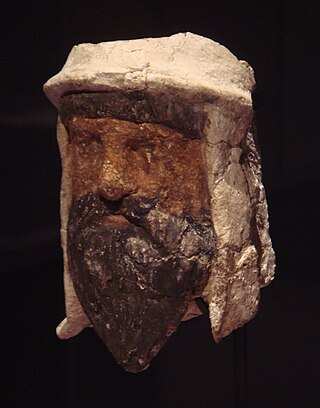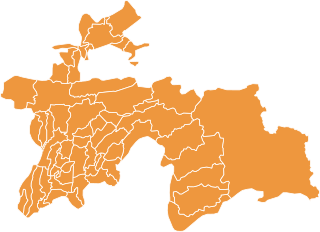| |||||||||||||||||
| Turnout | 86.49% | ||||||||||||||||
|---|---|---|---|---|---|---|---|---|---|---|---|---|---|---|---|---|---|
| |||||||||||||||||
| |||||||||||||||||
 |
|---|
Presidential elections were held for the first time in Tajikistan on 24 November 1991. [1] The result was a victory for Rahmon Nabiyev of the Communist Party of Tajikistan, who received 60% of the vote. Voter turnout was 86.5%.
| |||||||||||||||||
| Turnout | 86.49% | ||||||||||||||||
|---|---|---|---|---|---|---|---|---|---|---|---|---|---|---|---|---|---|
| |||||||||||||||||
| |||||||||||||||||
 |
|---|
Presidential elections were held for the first time in Tajikistan on 24 November 1991. [1] The result was a victory for Rahmon Nabiyev of the Communist Party of Tajikistan, who received 60% of the vote. Voter turnout was 86.5%.
| Candidate | Party | Votes | % | |
|---|---|---|---|---|
| Rahmon Nabiyev | Communist Party of Tajikistan | 1,321,189 | 60.44 | |
| Davlat Khudonazarov | Democratic Party | 678,461 | 31.04 | |
| Saifuddin Turayev | 101,146 | 4.63 | ||
| Khikmatullo Nasriddinov | 28,963 | 1.32 | ||
| Burikhon Salimov | 11,863 | 0.54 | ||
| Bobisho Shoyev | 8,273 | 0.38 | ||
| Akbar Maksumov | 5,140 | 0.24 | ||
| Against all | 30,974 | 1.42 | ||
| Total | 2,186,009 | 100.00 | ||
| Valid votes | 2,186,009 | 96.83 | ||
| Invalid/blank votes | 71,467 | 3.17 | ||
| Total votes | 2,257,476 | 100.00 | ||
| Registered voters/turnout | 2,610,089 | 86.49 | ||
| Source: Ethnic Aspects of Power [2] | ||||
After the elections, protesters gathered to peacefully protest the results. However, angry protesters eventually turned to violence, causing them to clash with the military in Khujand. This sparked the five-year long Tajikistani Civil War. Nabiyev was ambushed and held at gunpoint while going to Dushanbe Airport, where he was forced to resign. [3] [4]

Tajikistan, officially the Republic of Tajikistan, is a landlocked country in Central Asia. Dushanbe is the capital and most populous city. Tajikistan is bordered by Afghanistan to the south, Uzbekistan to the west, Kyrgyzstan to the north, and China to the east. It is separated from Pakistan by Afghanistan's Wakhan Corridor. Tajiks form the ethnic majority in the country and their national language is Tajik, a variety of Persian.

Tajikistan harkens to the Samanid Empire (819–999). The Tajik people came under Russian rule in the 1860s. The Basmachi revolt broke out in the wake of the Russian Revolution of 1917 and was quelled in the early 1920s during the Russian Civil War. In 1924, Tajikistan became an Autonomous Soviet Socialist Republic of the Soviet Union, the Tajik ASSR, within Uzbekistan. In 1929, Tajikistan was made one of the component republics of the Soviet Union – Tajik Soviet Socialist Republic – and it kept that status until gaining independence 1991 after the dissolution of the Soviet Union.

Emomali Rahmon is a Tajik politician who has been serving as 3rd President of Tajikistan since 16 November 1994. Previously he was the Chairman of the Supreme Assembly of Tajikistan, as the de facto head of state from 20 November 1992 to 16 November 1994. Since 18 March 1998, he has also served as the leader of the People's Democratic Party of Tajikistan, which dominates the Parliament of Tajikistan. On 30 September 1999, he was elected vice-president of the UN General Assembly for a one-year term.
Rahmon Nabiyevich Nabiyev, also spelled Rakhmon Nabiev, was a Tajik politician who served as the First Secretary of the Communist Party of Tajikistan from 1982 to 1985 and twice as the 2nd President of Tajikistan from 23 September 1991 to 6 October 1991 and from 2 December 1991 to 7 September 1992. He was also partly responsible for the Tajik Civil War. Rising out of the regional nomenklatura, Nabiyev ascended to power in 1982 as First Secretary of the Communist Party of Tajikistan. In 1985, he was ousted in a corruption scandal.

The Tajikistani Civil War, also known as the Tajik Civil War, began in May 1992 and ended in June 1997. Regional groups from the Garm and Gorno-Badakhshan regions of Tajikistan rose up against the newly-formed government of President Rahmon Nabiyev, which was dominated by people from the Khujand and Kulob regions. The rebel groups were led by a combination of liberal democratic reformers and Islamists, who would later organize under the banner of the United Tajik Opposition. The government was supported by Russian military and border guards.

Dushanbe International Airport is an international airport in Dushanbe, the capital of Tajikistan. It is the main hub for Somon Air and is the home base for Tajik Air, which also has its headquarters on the property.

The prime minister of Tajikistan is the title held by the head of government of Tajikistan. After the president, the prime minister is second most powerful person of the country. The prime minister coordinates the work of the Cabinet and advises and assists the president in the execution of the functions of government.
Safarali Kenjayev was a Tajik politician who served as the Speaker of the Supreme Soviet in Tajikistan 1991–1992, Chairman of the Tajik Parliament's committee on human rights and legislation, and as head of the Socialist Party of Tajikistan, which he founded.

The First Secretary of the Communist Party of Tajikistan was the head of the Communist Party of Tajikistan and the highest Executive power in the republic of Tajikistan from 1924 until November 1990.

Qahhor Mahkamov was a Tajik politician who served as First Secretary of the Communist Party of Tajikistan from 1985 to 1991 and was the first President of Tajikistan from November 1990 until his fall in the August 1991 coup.
Qadriddin Aslonov was acting President of Tajikistan from 31 August to 23 September 1991.
Akbarsho Iskandarov is a Tajik politician who was twice acting president of Tajikistan. He first served as acting president from October 6, 1991, to December 2, 1991, when Rahmon Nabiyev stepped down to fight Tajikistan's first presidential election. Nabiyev won the election and took over as the first popularly elected president in the country's history, but resigned in September 1992, following a coup d'état. Iskandrov again took the interim presidency and later resigned on 20 November 1992, after which the office of president was abolished and Emomali Rahmon was installed as head of state. Iskandrov also served as ambassador to Turkmenistan and Kazakhstan.
The Khujand clan, also known as the Leninabad clan, is the name given to political alliance based in Khujand, Tajikistan. The clan largely controlled the Government of Tajikistan from World War II until the Tajik Civil War.

United Nations Security Council resolution 968, adopted unanimously on 16 December 1994, after noting statements by the president of the security council and reports by the Secretary-General Boutros Boutros-Ghali on the situation in Tajikistan, the council established the United Nations Mission of Observers in Tajikistan (UNMOT) and addressed the process of national reconciliation in the country.

Tolibbek Ayyombekov, commonly known as Tolib Ayombekov, is an Ismaili Shia Pamiri jailed ex-opposition fighter from Tajikistan, who was involved in the Gorno-Badakhshan clashes in 2012 against the government forces of ruling Tajik president Emomali Rahmon. Until his arrest in June 2022, he was particularly influential in his home Khlebzavod microraion of Khorog.

Dousti Square is a square in Dushanbe, Tajikistan. It is connected to Rudaki Avenue and Hofizi Sherozi Avenue. It is the largest in Dushanbe.

Presidential elections were held in Tajikistan on 11 October 2020. The result was a fifth straight victory for authoritarian long-term incumbent Emomali Rahmon of the People's Democratic Party, who was re-elected with over 90% of the vote. Rahmon was inaugurated for his fifth term on 30 October. He was sworn in at a ceremony at the Kokhi Somon Palace in Dushanbe.

The 1992 Tajikistan protests, also known as the Tajikistani Revolution, were nonviolent, bloodless protests and demonstrations against the results of the 1991 Tajik presidential election. These results were thought to be rigged and in favour of the president Rahmon Nabiyev. Opposition rallies erupted on 26 March 1992 but demonstrations became large-scale by May, at the onset of violence. These series of peaceful protests would lead to the bloody Tajikistani Civil War.
The Popular Front of Tajikistan was a politicized paramilitary movement composed of volunteers that fought for the government during the Tajik Civil War. Up to 8,000 fighters served as part of the front.
The Party of Economic Reforms of Tajikistan is an officially registered centrist political party in Tajikistan.